Cause of Achilles Tendonitis
Achilles tendonitis is typically not related to a specific injury. The problem results from repetitive stress to the tendon. This often happens when we push our bodies to do too much, too soon, but other factors can make it more likely to develop tendonitis, including:
- Sudden increase in the amount or intensity of exercise activity. For example, increasing the distance you run every day by a few miles without giving your body a chance to adjust to the new distance.
- Tight calf muscles. Having tight calf muscles and suddenly starting an aggressive exercise program can put extra stress on the Achilles tendon.
- Bone Spur. Extra bone growth where the Achilles tendon attaches to the heel bone can rub against the tendon and cause pain.
Symptoms
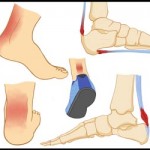 Common symptoms of Achilles tendonitis include:
Common symptoms of Achilles tendonitis include:
- pain and stiffness along the Achilles tendon in the morning
- pain along the tendon or back of the heel that worsens with activity
- severe pain the day after exercising
- thickening of the tendon
- bone spur (insertional tendonitis)
- swelling that is present all the time and gets worse throughout the day with activity
If you have experienced a sudden “pop” in the back of your calf or heel, you may have ruptured (torn) your Achilles tendon.
Nonsurgical Treatment
In most cases, nonsurgical treatment options will provide pain relief, although it may take a few months for symptoms to completely subside. Even with early treatment, the pain may last longer than 3 months. If you have had pain for several months before seeking treatment, it may take longer before treatment methods take effect.
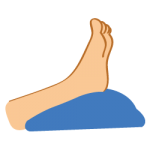 Rest – The first step in reducing pain is to decrease or stop altogether the activities that make the pain worse. If you regularly do high-impact exercises such as running, switching to low-impact activities will put less stress on the Achilles tendon. Cross-training activities such as biking, elliptical exercise, and swimming are low-impact options to help you stay active.
Rest – The first step in reducing pain is to decrease or stop altogether the activities that make the pain worse. If you regularly do high-impact exercises such as running, switching to low-impact activities will put less stress on the Achilles tendon. Cross-training activities such as biking, elliptical exercise, and swimming are low-impact options to help you stay active.
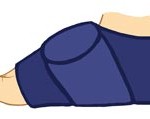 Ice – Placing ice on the most painful area of the Achilles tendon is helpful and can be done as needed throughout the day. This can be done for up to 20 minutes and should be stopped earlier if the skin goes numb. Wraps are available to place on your foot, that provides exceptionally high quality reusable wraps to target specifically the Achilles tendon.
Ice – Placing ice on the most painful area of the Achilles tendon is helpful and can be done as needed throughout the day. This can be done for up to 20 minutes and should be stopped earlier if the skin goes numb. Wraps are available to place on your foot, that provides exceptionally high quality reusable wraps to target specifically the Achilles tendon.
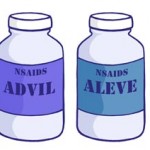 Pain Relievers – Drugs such as ibuprofen and naproxen reduce pain and swelling. They do not, however, reduce the thickening of a degenerated tendon. Using pain relievers should only be done when at rest, allowing your body to tell you whether an activity is too much for your injury. If you mask the pain, you’ll never know if you’re injuring yourself further, until it’s too late.
Pain Relievers – Drugs such as ibuprofen and naproxen reduce pain and swelling. They do not, however, reduce the thickening of a degenerated tendon. Using pain relievers should only be done when at rest, allowing your body to tell you whether an activity is too much for your injury. If you mask the pain, you’ll never know if you’re injuring yourself further, until it’s too late.
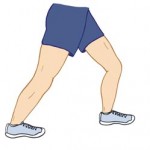 Exercise – Calf stretches can be done to help strengthen the calf muscle and reduce the stress on the Achilles tendon. It’s important to remember, that while this is a good technique to ensure that re-injury won’t happen, it shouldn’t be done while recovering from Achilles tendonitis as the stress of the stretch will only aggravate the injury and make it worse.
Exercise – Calf stretches can be done to help strengthen the calf muscle and reduce the stress on the Achilles tendon. It’s important to remember, that while this is a good technique to ensure that re-injury won’t happen, it shouldn’t be done while recovering from Achilles tendonitis as the stress of the stretch will only aggravate the injury and make it worse.
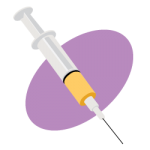 Cortisone Injections – While cortisone has its uses in the medical world, it should not be used to treat Achilles tendonitis. In order to heal properly from this ailment, you need to feel and respect the pain. This will give you an accurate guideline of what one can and cannot due with this injury. Masking the pain by using cortisone will only make the injury worse.
Cortisone Injections – While cortisone has its uses in the medical world, it should not be used to treat Achilles tendonitis. In order to heal properly from this ailment, you need to feel and respect the pain. This will give you an accurate guideline of what one can and cannot due with this injury. Masking the pain by using cortisone will only make the injury worse.
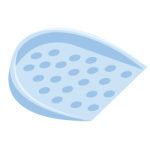 Supportive Shoes – Pain from Insertional Achilles tendonitis is often helped by the use of heel lifts. This will allow patients to remove their heel from the back of the shoe where rubbing may occur, as well as lift the heel, allowing the Achilles tendon to shorten back to it’s original length during the healing process. Keep in mind that a tendon or ligament will never shrink any shorter than it was before the injury occurred, so stretching the tendon or ligament will not help heal it, it will only make it worse.
Supportive Shoes – Pain from Insertional Achilles tendonitis is often helped by the use of heel lifts. This will allow patients to remove their heel from the back of the shoe where rubbing may occur, as well as lift the heel, allowing the Achilles tendon to shorten back to it’s original length during the healing process. Keep in mind that a tendon or ligament will never shrink any shorter than it was before the injury occurred, so stretching the tendon or ligament will not help heal it, it will only make it worse.